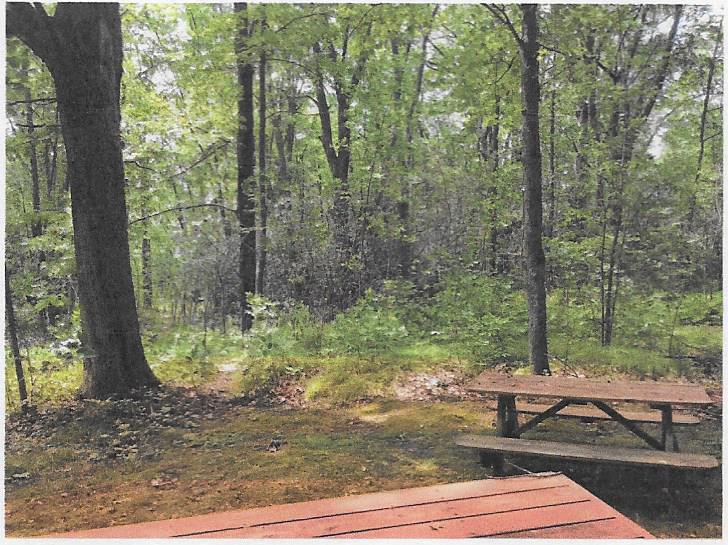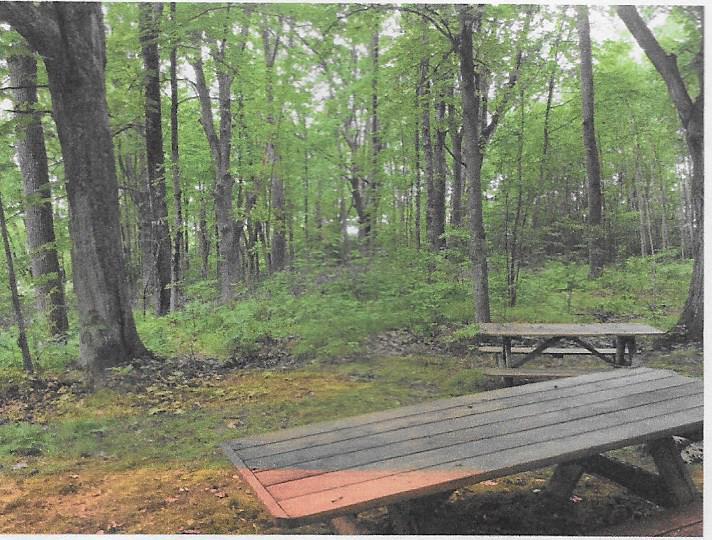
SPECIAL PROJECTS
READ ABOUT THE 2021-2022 RESTORATION AND CONSERVATION PROJECT OF ASPIRING EAGLE SCOUT COLIN BYRKIT
Here is an excerpt from Colin Byrkit's application to the scouting program: My name is Colin Byrkit. I am currently a Life Scout (Boy Scouts of America). I live in Woodbury, Minnesota. My connection to Stone Lake, Wisconsin, is outr family has been on this lake since the early 1950s. More recently, my grandparents (Bill and Mary Byrkit) built their yer-round home in 2004. Stone Lake has always been a second home for me and like my parents, I am making my own memories. Typically, scouts in my troop do local Eagle Scout projects; however, I wanted tmy project to be in the community that meant something personally to me and my family. Stone Lake and, specifically, the Wetland Park. My major reasons for selecting the Wetland Park are both civic and personal: the community that supports the park are neighbors, friends, and family; and, I have walked the park countless times; and every time it reminds me of walking in the woods with my family.
The project consists of two parts: fall, 2021, was restoration and conservation, focusing on the buckthorn areas near the wetlands; and secondly, the activities in the spring, 2022, to be directed toward reopeonng activities. We will be leaving existing deadfalls to decompoese and provide natural fertilizer i the natural habitat. By cleaning up the brush and buckthorn located throughout the park; we will be promoting healthier growth by allowing for better airflow and sunlight; and it will be more appealing to visitors to the park. Upon completion of this project; it will mitigate the risk of wildfires due to "fuels" (downfalls and buckthorn) that could start a fire or cause a fire to grow. Additionally, this project will improve the accessibility and appearance of the park. I plan to build large brush piles in the parking lot abddesignated areas; that will be burnt during the winter.
Buckthorn is an invastive species to the Northwoods of Wisconsin. Buckthorn disrupts the balance of our natural woods by pushing out the desirable native understory plants and creating a dark, dense thicket that resticts those native plants from getting the nutrients in needs.
Finally, there will be a spring clean-up project that will also include projectrs such as: a ramp at the shelter, culvert clean-up, and tree planting. The ramp will be placed at the gazebo since there is a step difference providing for better accessibility and greater safety. In working with the beneificiary, we are targeting to plant a few trees throughout the park in designatd areas. The goal of the trees is to suspend erosion, promote more natural wildlife, and scenery in theose areas.
The park presently has a book box with conservation-friendly books, I plan to condut a BOOK drive within my troop to support their local free library box.
Below is a photo of Colin Byrkit with two of the scouts who are helping with the work in the Wetland Park.
BUCKTHORN ERADICATION
For several years the Stone Lake Community Wetland Park has been waging war against buckthorn. Buckthorn is an invasive shrub that crowds out native species of
woodland trees, shrubs, and flowers. Two species, common and glossy buckthorn, can grow up to 20 feet tall with several sprouting stems. The female plants of both species produce small black berries
which are eaten by birds leading to plant dispersal over the landscape. The Stone Lake Community Wetland Park has been working on controlling and eventually eradicating buckthorn in the park. The
most effective method has been cutting by hand, then spraying the stumps with the herbicide Garlon 4, along with spraying the leaves of smaller plants. This method is helping the park return to a
more stable, native tree and shrub community.
On October 8, 2015, an educational workshop, hosted by the Washburn County Land and Water Department was held at the park where park volunteers and landowners were taught how to prevent and control
this invasive shrub. To raise the funds necessary to continue a full speed eradication effort a membership organization has been formed: Friends of the Wetland Park. As of April, 2018, 197
families have now joined a massive effort to make buckthorn past history in the Stone Lake Community Wetland Park!
Finally, this intensive five year project can be considered in "maintenance mode". It took the financial assistance of 197 families who had become Friends of the
Park as of April, 2018, to finance it to completion. Maintenance mode means that all of the large buckthorn trees and shrubs are gone, and only the very small, emerging buckthorn plants
remain. These will be controlled and, hopefully, someday eradicated by yearly foliar spraying. Since buckthorn is a plant that remains green well into the fall, the foliar spraying will
be done n September when the plants are easily identifiable because the leaves of other plants have begin to turn color and dry up.
Please use this link for complete information on Common and Glossy Buckthorn - Major Threats to Midwestern Woodlands: http://dnr.wi.gov/files/pdf/pubs/fr/fr0216.pdf
PICTURE TAKEN FROM THE PARKING LOT PICNIC TABLES TOWARD THE LAKE. THE BUCKTHORN CONGESTION IS PRETTY OBVIOUS - NOTICE THE LARGE TREES THAT ARE BARELY VISIBLE THROUGH THE BRUSH (ALMOST ALL OF IT BUCKTHORN) IN FRONT OF THEM.
THE EFFECT OF CUTTING DOWN THE INVASIVE BUCKTHORN IS QUITE DRAMATIC. HUGE TREES THAT WERE NEARLY INVISIBLE ARE NOW CLEARLY VISIBLE. MORE IMPORTANTLY, LIGHT IS NOW REACHING THE FOREST FLOOR AND ENERGIZING NATIVE PLANT GROWTH.
TREE PLANTING
A second SPECIAL PROJECT for the Wetland Park was the Tree Planting Event in May, 2018. On the first two Saturdays of May, 2018, large groups of local children, along with parents and grandparents, received trees and were directed to areas where they might plant their trees. During this event, nearly 100 trees were planted, and for the balance of that summer they were tended to with regular watering until they were doing well on their own. Today, two years later, at least 60 of those original trees are thriving and have been marked with flags so they can be found among the heavy ground cover of ferns. One more year and all of them should be tall enough to tower over the ferns to reach the sun.
Jonah, Nora, and Stella planting their trees



